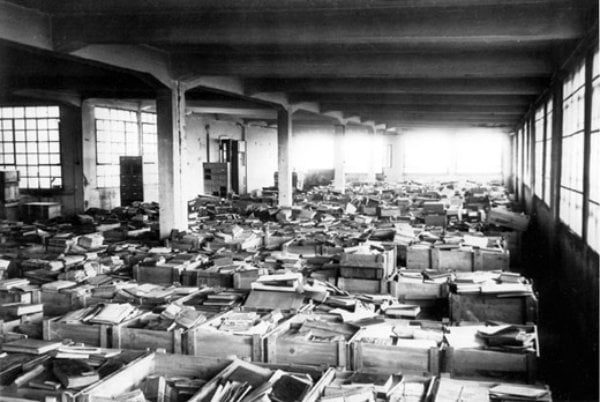Art World
Kunstmuseum Bern Says Nazi-Era Gurlitt Trove Has 500 Works With Dodgy Provenance
Finally someone's making an effort to give back the stolen art.

Photo: via Smithsonianmag.com
Finally someone's making an effort to give back the stolen art.

Lorena Muñoz-Alonso


Kunstmuseum Bern
Photo: Andreas Praefcke via Wikimedia Commons
The Kunstmuseum Bern has released a preliminary list itemizing some of the artworks in the controversial Gurlitt collection. The Swiss institution said that the prompt publication of the list was made “in the interest of transparency,” and that it will be updated as more information about the works is progressively unearthed.
The release comes hot on the heels of the Kunstmuseum Bern’s Monday announcement that it would accept the trove of artworks bequeathed to it by the late collector Cornelius Gurlitt (see “Kunstmuseum Bern Accepts 1,300 Artwork Nazi-Era Gurlitt Collection Amidst Legal Battles”).
Since the collection of almost 1,300 (or according to some sources, 1,600) artworks was discovered in Gurlitt’s Munich apartment in March 2012, speculation has run rife in both the international media and art world as to the scope of the holdings.
Artists said to be in the collection upon its discovery included Claude Monet, Marc Chagall, and Henri Matisse. But the true dimensions of the Gurlitt collection began to be revealed in earnest yesterday, and they certainly have not disappointed. While this list is still in progress—with many undated and untitled works, and several unclear attributions—it can be safely said that it is a truly exceptional collection.
One of the earliest works in the collection is an oil on canvas landscape by Jan Brueghel the Elder. Other highlights include a landscape by Paul Cézanne, entitled Montagne Sainte-Victoire (1897), several works by Jean-Baptiste-Camille Corot and Gustave Courbet, as well as pieces by Monet, Édouard Manet, and Paul Gauguin. There are also delightful small works, like a half-length nude by Pierre-Auguste Renoir. Several paintings by Louis Gurlitt, great grandfather of the deceased collector are also included.
A Breathtaking Collection
The collection of works on paper is nothing short of breathtaking, and features a Paul Klee aquarelle, a group of George Grosz aquarelle and ink drawings, sumptuous female nude drawings by Ernst Ludwig Kirchner, a pastel drawing of three dancers by Edgar Degas, and a superb ink and watercolor drawing by Wassily Kandinsky.
The collection was originally amassed by Cornelius Gurlitt’s father, Hildebrand, a Nazi-era art dealer. Although Cornelius Gurlitt claimed numerous times that his father had obtained the artworks legally, a communications officer from the Kunstmuseum Bern told artnet News that that up to 500 works were suspicious and would be thoroughly assessed to determine their provenance.
A private donor stepped in yesterday to help the institution with such a monumental task, pledging a “seven-figure sum” to fund a research unit dedicated to the study of the collection (see “Private Donor Funds Kunstmuseum Bern’s Gurlitt Research Unit”).
When announcing the acceptance of the collection on Monday, Kunstmuseum Bern’s president Christoph Schäublin declared that Nazi looted artworks would not be permitted in the museum. So it remains to be seen which works from the illustrious roster will finally make it to the gallery walls.
The Swiss institution also said that it would make every effort to return any looted pieces to their rightful heirs. The director of the museum, Matthias Frehner, was quoted in Le Quotidien de l’art saying a view of Paris by Camille Pissarro had already been identified as looted and would be restituted.
Last summer, Henri Matisse’s Seated Woman/Woman Sitting in Armchair (1921) became the first work from the Gurlitt collection to be verified as Nazi loot. The painting will be returned to the heirs of the French dealer and art collector Paul Rosenberg (see “Matisse From Gurlitt Trove Once Belonged to Paul Rosenberg”).